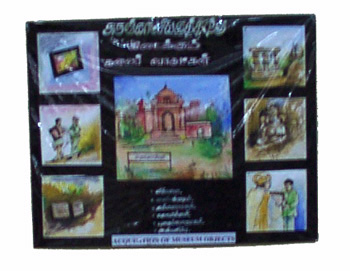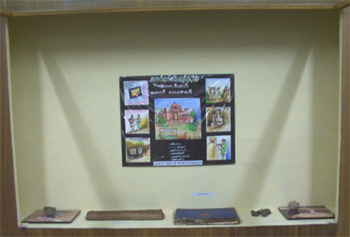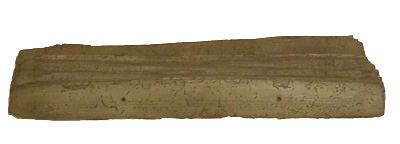|

|
Acquisition of Museum
Objects
The Government Museum, Chennai acquires objects through various means
such as treasure-trove finds, field collection, purchase, gifts, loans, transfers, confiscation
etc. Once the objects are received, they are documented by the different sections of the Museum
giving the accession numbers. Once these objects are documented, as per the norms, they come to
the Chemical Conservation and Research Laboratory of the Museum for conservation or restoration,
if needed. The conservation or restoration of the objects is carried out in consultation with the
collection Curators. |

|
|
| Conservation of Stone Objects
Stone is a composite material of various minerals. It is more stable than
metals. Stones are affected by moss, lichen and algae appearing green in moist condition after
drying they appear black. The black deposit can be removed by the application of 10% ammonia
solution followed by brushing and washing.
Absorbed salts get re-crystallised and break the upper layer. Therefore the
salts are removed by paper pulp treatment (Poulticing). The paper pulp moistened with
distilled water is applied over the stone object and it absorbs the salts present in the pores
of the object and is removed due to drying. This process is repeated. After complete removal
of the soluble salts, the stone objects are coated with a 2% solution of poly vinyl acetate or
ethyl silicate in acetone. In case the object is in contact with the ground, protective
coating is avoided.
|

Amaravathi Lime-Stone Sculptures
|

|
Conservation of Palm-Leaf Manuscripts
Palm-leaves are one of the writing materials in India
and the Far East. Grown palm-leaves were cut, dried, boiled in turmeric solution and incised
with the help of a stylus, a sharp nail like knife. The incised portions were used to be
filled with black pigments for better legibility.
The palm-leaf manuscripts are normally affected by
insects, tunnels are made and at times they are stuck together. Stuck leaves are kept in a
steam bath and are easily separated. The leaves are cleaned with a 2% solution of citronella
oil in rectified spirit with a little of lampblack. By applying this solution, the
hardened leaves get softened, the insects are driven off by the oil and the black colour adds
visibility to the incised matter. |
|
|
|
|